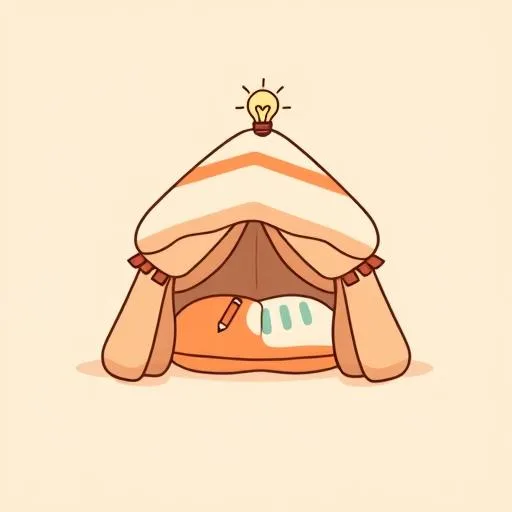
Have you ever watched your kid build something? I mean, really watch them? The other day, my seven-year-old was constructing this delightfully chaotic pillow fort — an architectural wonder of blankets and cushions held up by pure imagination. Her eyes were sparkling, focused on creating a world that felt entirely her own. It was magical! That’s when I thought about a story I read about investor Martin Mignot — the one who backed startups like Deliveroo and Figma before anyone knew what those names were. His secret? Seeing that same spark in companies… and knowing kids can carry it too.
What Does Ownership Really Mean for Our Kids?

Mignot’s key insight? “It’s about owning equity.” That’s how he made millions before 30 — by spotting startups where someone was truly invested, not just showing up. He says the path for the next generation is clear: start something or join a promising early team. Both roads lead to one powerful thing — ownership of their journey.
Now, this doesn’t mean handing out stock options to kindergarteners. But there’s a mindset shift we can encourage early—helping kids see that if they care deeply about something, they’re not just along for the ride anymore; they’re the driver. When we teach them that their thoughts, efforts, and creations are worth owning, even if messy, we help nurture a powerful sense of purpose. And that’s how we start building that incredible spirit of being creators, not just consumers, in them!
How Do We Teach Kids to See Potential in Imperfection?

Now here’s the part that hit me like a warm hug: Mignot didn’t take a shine to Deliveroo because its early website looked great. Nope — he said it was “ugly and terrible,” but beneath all the chaos, there was something special: a brilliant idea in action. WOW!
In a world obsessed with perfection, how do we raise kids who know that sometimes the best stuff comes from the messiest beginnings? It starts at home — celebrating crooked paintings, unsteady block towers, and half-baked stories because underneath that wobble might lie pure genius. Instead of focusing only on the look of things, we can train ourselves — and them — to savor the soul behind it. Because that’s where real creativity lives!
Are Screens Secretly Our Kids’ Greatest Creative Tools?

Look — we all have those screen time debates around the dinner table. But Marc Mignot showed me a new way to look at it. He says kids today have a superpower that no other generation has ever had: the ability to create and publish with the same tools used by creators worldwide, right from their bedroom desk. Forget doomscrolling — think design apps, music-making software, storytelling platforms. These are the tools that allow ideas to take shape easier than ever before.
It’s not about turning our kids into entrepreneurs overnight. It’s about giving them the means to explore, build, and share without needing permission slips or appointments. Imagine swapping guilt with excitement: from worrying about screens to cheering on small digital experiments like custom sticker packs or snack reviews. The conversation around AI in education could evolve from caution to collaboration, making these technologies feel like allies, not distractions. Powerful tools to bring their ideas to life.
What If Failure Is Actually the Best Teacher?

Let’s get honest: starting anything new is tough. One study found that just 35% of startups still exist after seven years. So does that mean we shouldn’t encourage our kids to dream big? Absolutely not! In fact, failure might be the greatest gift we ever give them.
Because when we teach them to stand back up after the cookie dough flops or the blanket bridge collapses, we’re not teaching them to avoid disappointment — we’re teaching them to find growth inside it. That’s where courage is born, confidence grows, and real learning takes root. The process itself is the reward, not the picture-perfect climax. We don’t raise kids to win every time. We raise them to try大胆ly, fail gracefully, and restart joyfully.
How Can We Nurture Innovation at Home?
Bringing this energy home doesn’t have to mean signing up for CEO summer camps (trust me, I’ve seen those). It’s about sprinkling small adventures, big questions, and joyful messes into everyday life. Here are a few ideas that actually work:
- Let them lead wild missions: Want to sell stickers inspired by anime characters or make YouTube videos reviewing homemade kimchi pancakes or those maple cookies from our last trip downtown? Say yes! Give them space to plan, mess up, and finish with pride.
- Become curiosity inspectors together: As you take walks around the neighborhood, turn it into a game. Ask “What’s one way we could make this spot way cooler?” Whether it’s a smarter toy box system or a message board on the play structure, looking for little improvements plants imagination over obedience.
Cheer every near success: Did the tower fall… again? Did the recipe turn into glorified glue? This is when you give the loudest claps. Cheer the thinking, not just the outcome. Failure then becomes less scary, more like a roadmap pointing to the next round of trying.
In the end, Martin Mignot’s story isn’t just about money — it’s about believing in the magic swirling beneath every pickle-brain idea your kid throws out. Kind of brings us full circle to that pillow fort, doesn’t it? It reminded me why building matters — not the structure, but the joy in their eyes while making it. And if we support that spark today, imagine what they’ll dare to dream tomorrow.
Source: Millennial investor behind Deliveroo, Scale AI and Figma made millions in his 20s—he shares how Gen Z can spot a startup that’ll make them rich too, Fortune, 2025/09/07 09:00:00
